Hiroshima is a vibrant and cosmopolitan metropolis that has risen from the ashes of the tragedy in its past. Today, it projects a message of peace and hope to the world, full of fascinating and poignant experiences.
Those who visit this friendly and optimistic city will find a wealth of things to do in Hiroshima.
Located in the lesser-visited Chugoku region of Japan, Hiroshima is about 90 minutes from Osaka and Kyoto on the shinkansen (bullet train) or four hours from Tokyo. This ease of access makes the city a great addition to almost any Japan itinerary.
A day trip is possible, or stay longer to make even more out of your visit. Begin by exploring our top suggestions for things to see and do while you’re in Hiroshima.

A Brief History of Hiroshima
It may be most widely known as the first city to be attacked with an atomic bomb, but Hiroshima’s history dates back centuries. It was founded in 1589 as a castle town on the banks of the River Ota.
During the Meiji era, Hiroshima grew to become a major urban center. Although decimated by the devastating events of 1945, it was spectacularly rebuilt to become the modern, dynamic metropolis it is today.
What this means for visitors is that there are plenty of historical and cultural sights to be enjoyed, as well as all of the modern comforts you’d expect from a major Japanese city.
Depending on your interests, you can include historical sights, arts and culture, regional food specialties, or all of the above!
Historic Sites and Moving Landmarks
A city with so much history naturally has an abundance of notable sightseeing spots, and Hiroshima’s are especially poignant. These are the three most significant historical sights to visit.
1. Hiroshima Peace Memorial Museum
Understandably, Hiroshima’s most important and moving landmarks are those related to the atomic bombing of the city in 1945. Nowhere is this more true than at the Hiroshima Peace Memorial Museum.
Although it’s a harrowing and emotional experience, visiting the museum is critical to understanding what the city endured and how astounding its recovery has been. Reflecting on Hiroshima’s past is important to ensure such a tragedy never happens again.
The exhibits are respectful, thought-provoking, and very personal — it’s impossible not to be moved by what you see.
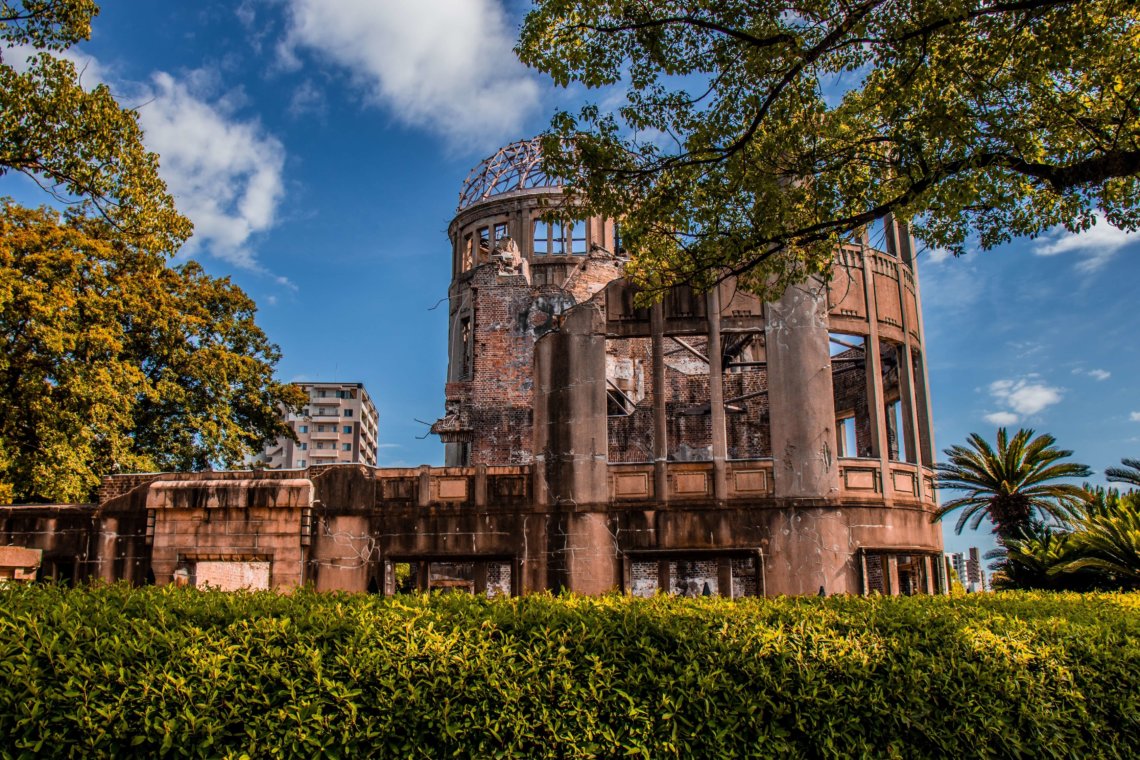
2. Hiroshima Peace Memorial Park
Surrounding the Peace Museum is the Peace Park, a spacious green area of over 120,000 square meters, dotted with numerous memorials to the victims of the atomic bomb.
Monuments include the prominent A-Bomb Dome, the arched Cenotaph – which holds the names of all known victims – and the Flame of Peace, which will only be extinguished when the world is rid of nuclear weapons.
Perhaps the most touching memorial is the Children’s Peace Monument, where people still send folded paper cranes as a wish for peace.
3. Hiroshima Castle
For a glimpse all the way back to Hiroshima’s origins, take a look around the striking Hiroshima Castle. Also known as Carp Castle, this faithful 1958 reconstruction houses an interesting and educational range of exhibits about the city’s history.
Displays include weapons and armor belonging to the castle’s former lords, as well as information about Japanese castles in general.
Don’t miss the observation deck on the top floor, which offers panoramic views out over the city.
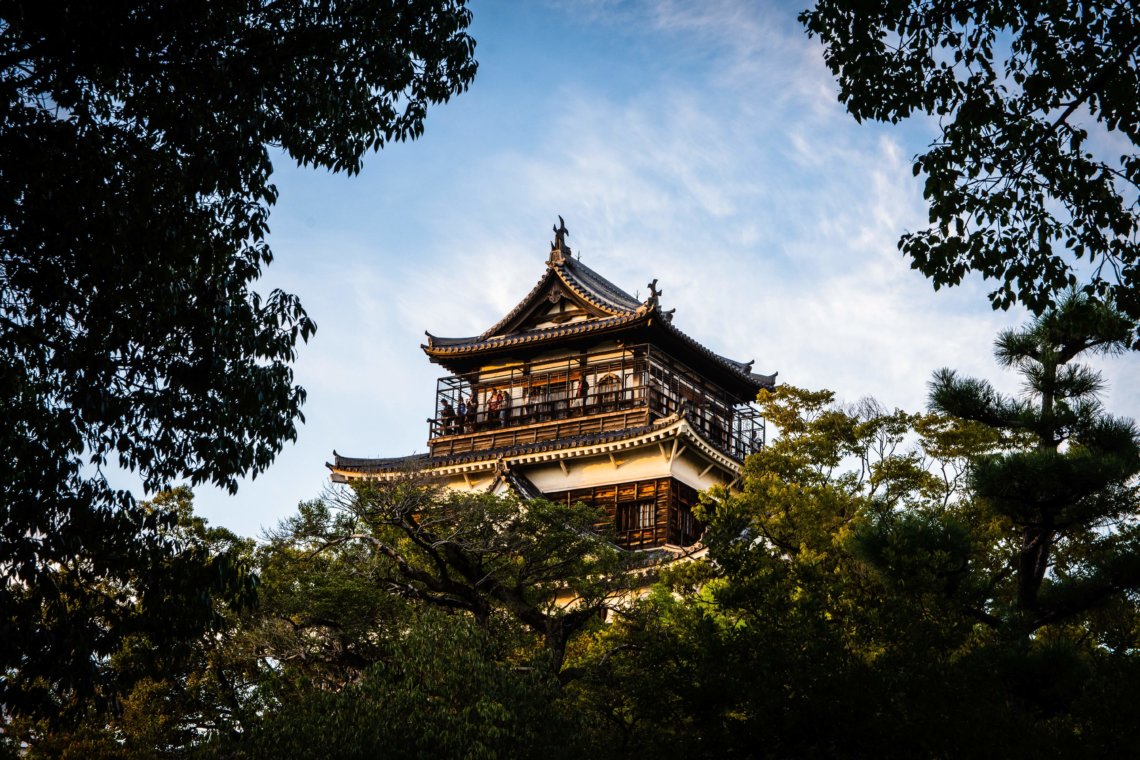
Hiroshima Temples and Gardens
Hiroshima is home to some areas of outstanding natural beauty. From man-made gardens to forested mountains, there are some lovely locations here where you can escape the hustle and bustle of the city center.
4. Shukkeien Garden
Not far from the castle, you’ll find Shukkeien, a meticulously-cultivated landscape garden that was first constructed in 1620. Its name translates as the Garden of Shrunken Scenery, and as you might expect, it recreates a variety of landscapes in miniature within its picturesque grounds.
A meandering path takes you around a pond, past tea houses, and through small-scale forests, mountains and valleys. Each season brings different flora to enjoy here, with spring cherry blossoms and autumn leaves being particularly beautiful.
5. Mitaki Temple
Another spot that’s especially stunning in autumn is Mitaki Temple, in the north of Hiroshima. Concealed on the forested slopes of Mount Mitaki, this atmospheric temple complex dates all the way back to 809.
Its grounds are home to three gently cascading waterfalls, a pretty two-storied red pagoda, several memorials for atomic bomb victims, a traditional tea house, and a multitude of stone jizo statues covered in moss. A couple of hiking trails also run up the 365-meter mountain behind it, taking you to a pleasant picnic spot with great views of the city.
6. Peace Pagoda
A shining silver dome atop the 139-meter Mount Futaba, this Buddhist stupa houses ashes of the Buddha plus thousands of memorial stones. Each stone is donated by local residents and represents a prayer for peace.
It’s possible to drive to the Peace Pagoda, but you can also hike up to it from the nearby Toshogu shrine, through an eye-catching tunnel of red torii gates in the forest. There’s also the option to continue along the 10-kilometer Futaba-no-sato historic walking trail, which connects 16 temples and shrines in the area.
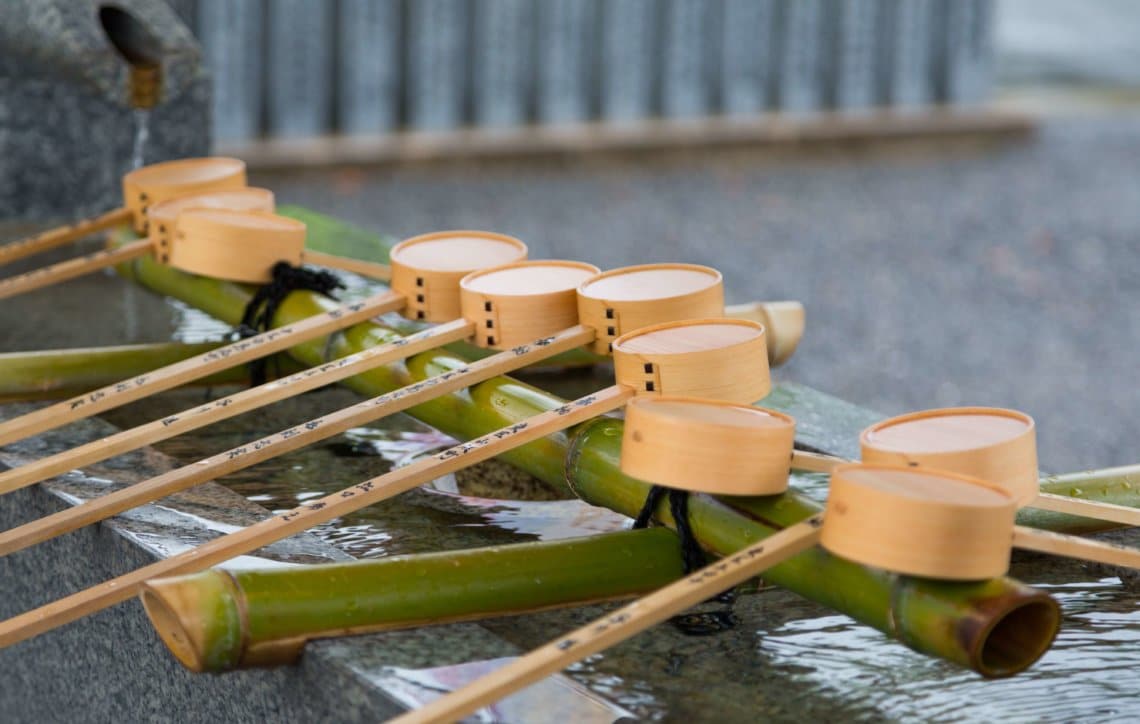
Arts and Culture in Hiroshima
Immerse yourself in Hiroshima’s artistic and cultural side at these captivating institutions, from the classical to the modern.
7. Hiroshima City Museum of Contemporary Art
Opened in 1989, Hiroshima MOCA was the first public art museum in Japan dedicated to contemporary art. Located in the leafy Hijiyama Park, it hosts a range of exhibitions featuring pieces from its permanent collection, as well as special events and exhibitions showcasing both Japanese and international artists.
You can also explore interactive outdoor sculptures in the grounds, which are particularly beautiful during the spring when the cherry blossoms are on display.
8. Hiroshima City Manga Library
Explore the pop culture phenomenon of Japanese manga at the Manga Library, just around the corner from the Museum of Contemporary Art. Completely devoted to Japanese comics, the library collects and preserves manga and manga-related materials, and organizes a range of manga events.
The library boasts a collection of more than 100,000 items, from valuable classics to modern editions. You can browse the reading room at your leisure (there is a small foreign language section), and even take books outside to read.
9. Hiroshima Prefectural Art Museum
This spacious museum has around 3,500 pieces in its permanent collection, which are featured in rotating exhibits, and regularly hosts visiting exhibitions. The collection includes traditional Asian arts and crafts, as well as international pieces like Salvador Dali’s Dream of Venus.
One of the most unique features of the museum is the Citizen’s Gallery, which showcases work by local artists who otherwise might not have the chance to exhibit their art. Its location adjacent to Shukkeien garden means these two attractions can easily be seen on the same day.
10. Mazda Museum
The Mazda car manufacturing company has its headquarters in Hiroshima and plays a large role in the city’s economy. They offer daily guided tours of the plant, to take visitors through the history of the company, its technological innovations, and plans for the future.
For many, the most interesting part of the tour is the vehicle assembly line, where you can actually see a variety of cars being made in front of you. Tours last around 90 minutes, and reservations are required, but can be made online in English.
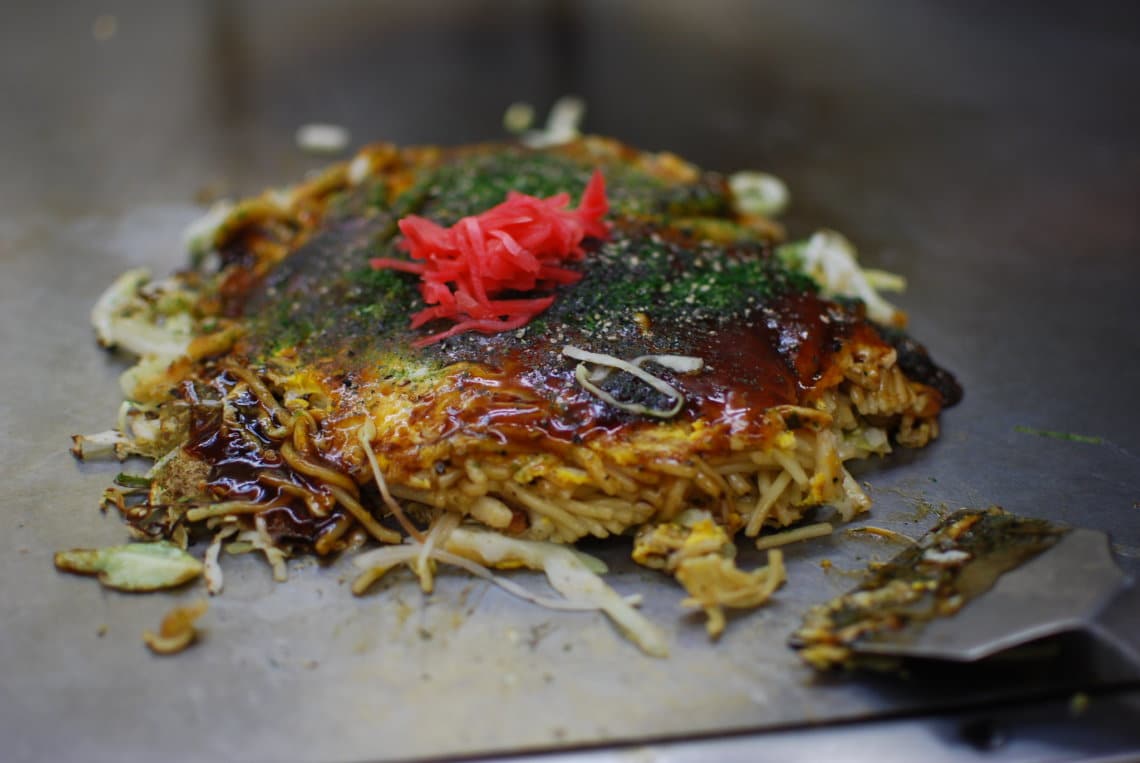
What to Eat and Drink in Hiroshima
No visit to Hiroshima is complete without sampling the local Japanese cuisine. Here are three of the tastiest treats to look out for.
11. Okonomiyaki
Hiroshima’s most famous dish is, without a doubt, Hiroshima-style okonomiyaki. The name is a combination of okonomi, meaning ‘what you like,’ and yaki, meaning ‘grill.’
Okonomiyaki is a savory pancake-style dish made with batter, noodles, and either seafood, meat, or vegetables. The ingredients are built up in layers as it’s cooked, to create a delicious meal that goes perfectly with a cold beer!
Restaurants throughout the city serve the dish, and vegans can head to Nagata-ya for a 100% plant-based version (or check out our guide on traveling in Japan with dietary restrictions and food allergies).
12. Oysters
Hiroshima’s other must-try local delicacy is oysters. The city is one of Japan’s largest producers of the shellfish, and the nutrient-rich waters of the nearby Seto Inland Sea are perfect for oyster cultivation.
The main production season runs from November through February, but you can find them in restaurants year-round. Try local oysters raw, grilled, or in many other specially-prepared dishes.
13. Sake
In addition to being famous for oyster production, Hiroshima is one of the top three sake producing regions in Japan. There are a plethora of breweries in the city offering tours and tastings, where you can find out how the drink is made and sample some of the numerous varieties.
Many of Hiroshima’s sake breweries are located in the district of Saijo, which is prized for its water – said to be especially well suited to sake brewing – and hosts a lively sake festival every October.
Events and Activities
There’s no shortage of things to do in Hiroshima, and the old cliche “something for everyone” certainly holds true.
Whether you’re into sports, performing arts, or just looking to shop ‘til you drop, there’s never a dull moment here. When you’re tired of sightseeing, try one of these activities.
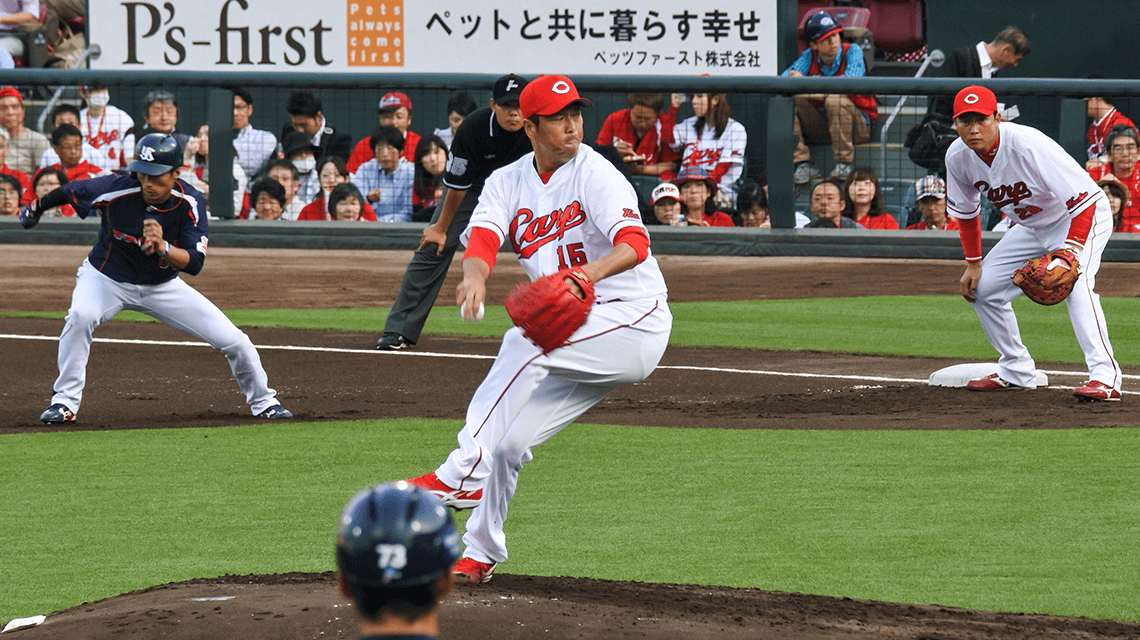
14. Baseball Games
Baseball continues to be one of the most popular sports in Japan and going to watch a game is a fun way to experience a more modern side of Japanese culture. Hiroshima’s beloved team, the Carps, has legions of dedicated fans who pack the stands at every game.
Even if you don’t know much about baseball, the energetic chants and cheers – plus the dramatic balloon release in the seventh inning – are guaranteed to pull you in. Purchase some of the miniature plastic bats from the team shop to join in with the drumming!
15. Hiroshima Shopping
Fans of retail therapy will be spoilt for choice in Hiroshima, whether you’re looking for souvenir shops, department stores, or shopping malls. The bustling downtown area is home to the Hondori pedestrian arcade, lined with a wide variety of shops, restaurants, and coffee shops.
If you want to make a day of it, try mega-mall The Outlets. Home to around 200 big-name stores, it also has an entertainment zone where the whole family can enjoy activities like ice skating, bowling, and karaoke, or catch a film at the cinema.
16. Kagura
For something more traditional, we highly recommend attending an evening of Kagura. This authentic Japanese performance art dates back hundreds of years and was originally created as a way to express thanks to the gods.
Kagura brings legendary stories and mythological characters to life through magnificent costumes, dramatic masks, elegant dancing, energetic music, and powerful theatrics. Although performed in Japanese, certain showings have English subtitles and explanations to help you follow the epic storylines.
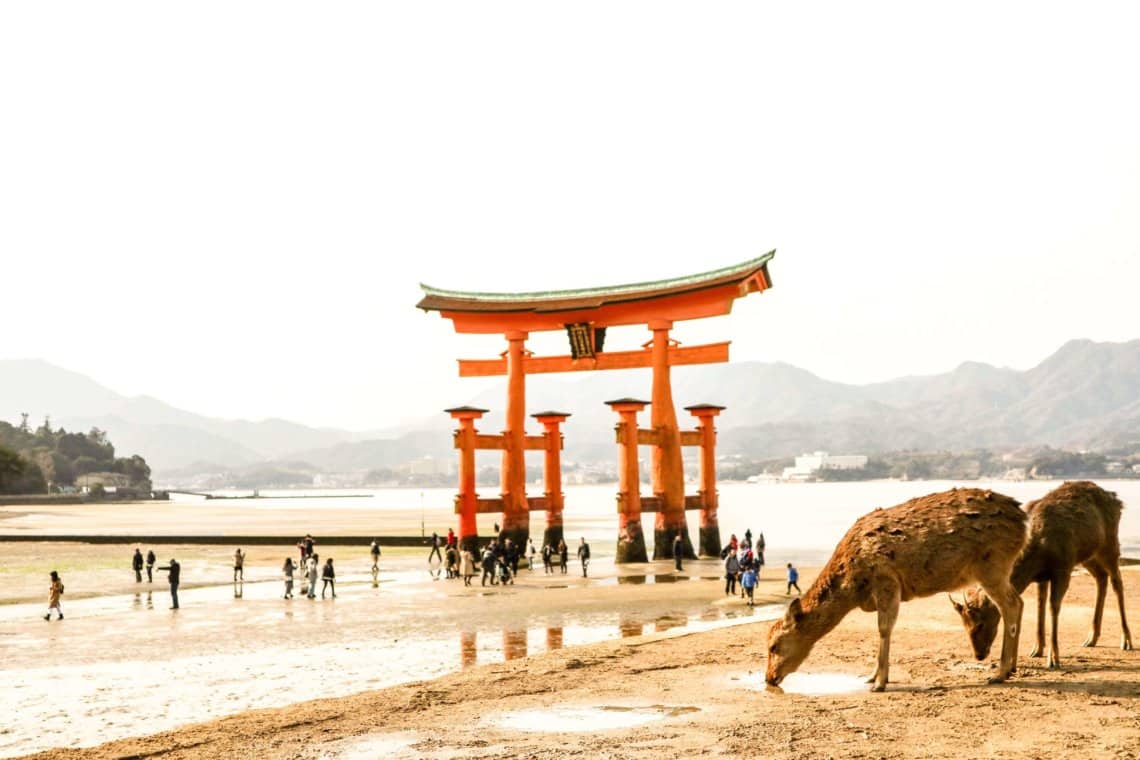
Miyajima
This small island just off the coast of Hiroshima is so atmospheric and enjoyable, it’s deserving of its own section. Home to several famous sights and numerous wild deer, an overnight trip is the best way to experience Miyajima.
17. Itsukushima Shrine
This otherworldly shrine is Miyajima’s most famous feature, and its huge red torii gate is one of the most iconic sights in Japan. Set out in the Seto Inland Sea, it’s said to be a gateway between the human world and the spirit world.
At high tide, the gate appears to float ethereally on the water, and the only way to reach it is by boat. Meanwhile, when the tide is out, it’s possible to walk around it and see the structure up close.
18. Daisho-in Temple
Just five minutes’ walk from Itsukushima Shrine, you’ll come across this prestigious and charming Buddhist temple. It stands in the forested foothills of Miyajima’s Mount Misen, and has a number of buildings and artifacts to explore. These include a large sand mandala made by visiting Tibetan monks and a lantern-lit cave containing icons representing the 88 temples of the Shikoku pilgrimage.
There are also prayer wheels installed along the temple steps, which you can spin as you climb to receive the blessings of the sutras inscribed on them – even if you can’t read them.
19. Mount Misen
At 500 meters, this is Miyajima’s highest peak and can be ascended on foot or by ropeway. Whichever you choose, you get gorgeous views from the summit over the Seto Inland Sea and back towards Hiroshima.
Mount Misen is exceptionally beautiful in autumn when the leaves change to blazing reds and oranges, but it’s more than just an area of natural beauty. It’s also home to several Daisho-in Temple buildings, including a hall to protect a sacred flame that was used to light the Flame of Peace in Hiroshima’s Peace Park.
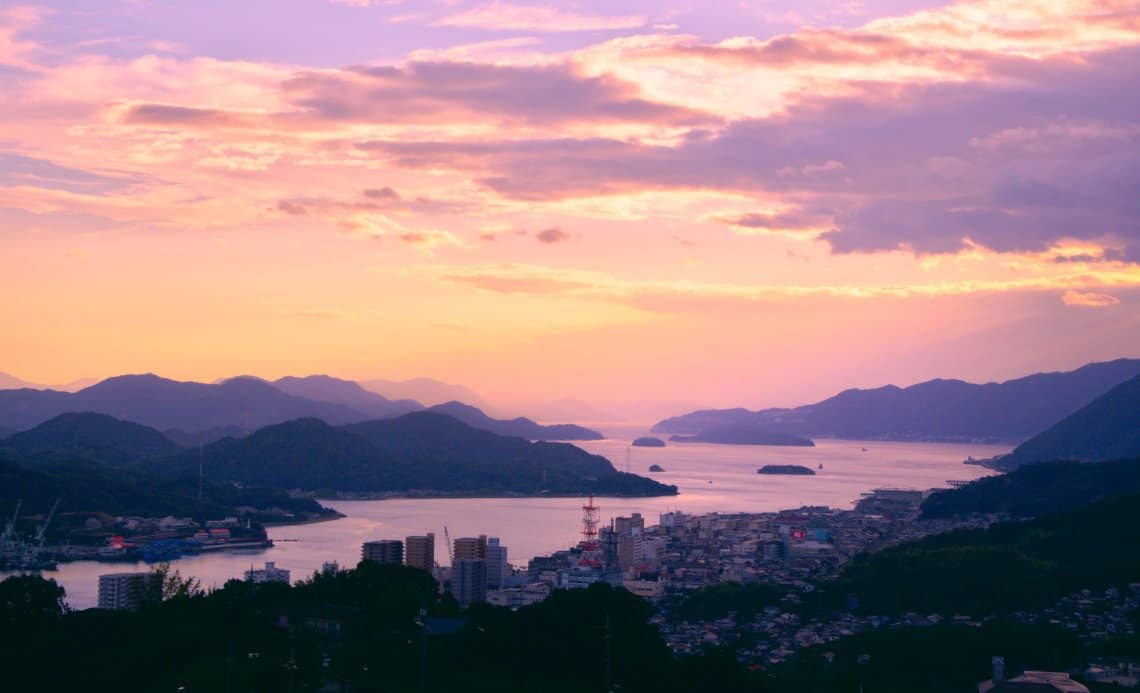
Day Trips from Hiroshima
In addition to Miyajima, there are a number of other locations that make ideal day trips from Hiroshima city. These are our top three recommendations for places to check out if you have the time.
20. Okunoshima
Another island worth visiting – especially for animal lovers – is Okunoshima, better known as Rabbit Island. Small and peaceful, it’s home to a colony of over 1,000 wild bunnies who are more than happy to cuddle up with you in exchange for food and attention!
In stark contrast to its current state, Okunoshima has a dark history as a secret site for the production of poison gas during WWII. There’s a museum on the island that educates visitors about the horrors of chemical warfare.
21. Sandankyo Gorge
Keen hikers should definitely consider a visit to the stunning Sandankyo Gorge, just under an hour and a half away by highway bus. It’s the perfect escape from the city into the heart of nature, with an out-and-back trail about eight miles long.
The route travels through a gorgeous ravine of towering rock, past cascading waterfalls and surging rapids, untamed wilderness, and crystal-clear rock pools. Between April and November, you can take a boat ride through the gorge for an even closer look.
22. Onomichi
This quaint town lies just under two hours from Hiroshima City. Despite its small size, Onomichi has a lot to offer. There is an astonishing number of temples here, with a designated Temple Walk linking 25 of them. One of these, Senkoji, is set within a picturesque park atop a hill. It can be reached either on foot or by ropeway, and there are great views over the town’s traditional rooftops from the observation platform.
You can also rent a bike and cycle from Onomichi along the Shimanami Kaido, a 60-kilometer expressway that connects Japan’s main island of Honshu to Shikoku via six small islands in the Seto Inland Sea.
Hiroshima: Start Planning Your Visit
You’ll find unique and memorable experiences in Hiroshima, no matter what time of year you choose to travel in Japan. The natural beauty, modernity, and history make it a rewarding destination to include in your trip.
Whether you’re planning your own itinerary, or looking for a personalized one-of-a-kind Japan trip, we hope you can make time to enjoy some of what Hiroshima has to offer.


